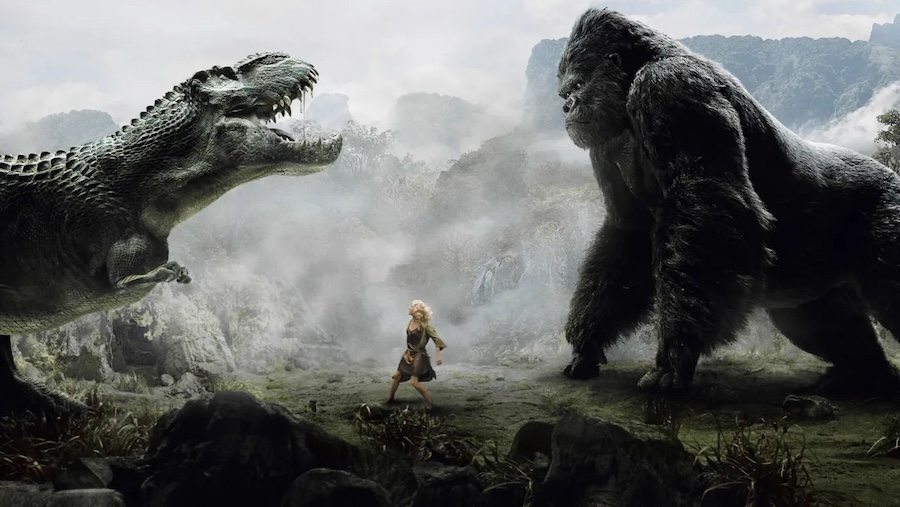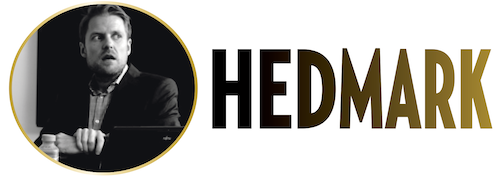
THE EIGHTH WONDER OF THE WORLD.

The executives at Universal must have wondered if Peter Jackson had lost his mind. Directing a three-hour remake of an old, classic monster movie sounded like a stupid idea, and the 1976 John Guillermin version was far from a masterpiece. But the suits must have seen some commercial possibilities in the project, which ended up costing more than $200 million. And they were right to believe in Jackson. His version is every bit as good as the 1933 classic. Who would have thought it?
Sacrifice to a giant ape
The story is the same, but it has been thoroughly fleshed out. We’re in New York in the early 1930s where filmmaker Carl Denham (Jack Black) in desperation hires out-of-luck actress Ann Darrow (Naomi Watts) and with the rest of his crew embarks on a boat trip to make a movie. What the crew doesn’t know is that they’re headed for a mysterious place called Skull Island where few humans have ventured before. Once there, vicious natives attack them, kidnap Ann and offer her as sacrifice to a giant ape called Kong.
Screenwriter Jack Driscoll (Adrien Brody), who has a crush on Ann, leads an expedition deep into the jungle on the island where they encounter other giant-sized animals, including dinosaurs. The encounter with Kong is violent, but Ann is rescued and the ape is captured. But how long will that last?
Follows in Wray and Lange’s footsteps
It wouldn’t be King Kong if it didn’t lead to that absolutely heartbreaking ending atop the Empire State Building. One of the best things about this version is how much Jackson and his crew make us believe in the relationship between Ann and Kong. Watts follows in the footsteps of Fay Wray and Jessica Lange and is equally great. Andy Serkis stood model for Kong’s movements (as he did for Gollum in the Lord of the Rings movies) and the motion capture effects never make us doubt the fact that the ape is a living, breathing member of the cast. That’s why we believe more than ever before in this love affair.
At the end of that sequence we’re just as exhausted as that bruised but proud ape.
The action sequences take one’s breath away. There’s a stampede that may not look as convincing as other spectacular scenes (and obviously won’t improve with time), but even that one has its share of thrills. The definitive action highlight is a showdown between Kong and, not one, but three Tyrannosauruses; at the end of that sequence we’re just as exhausted as that bruised but proud ape. This is a gorgeous creature feature; brace yourself for some of the biggest and meanest bugs seen this side of Eight Legged Freaks (2002).
The filmmakers also paid careful attention to recreating New York as it must have looked in those days (at least until Kong gets to wreck it); the film opens with a few lovely shots of the city and the titles are distinctly 1930s-style. This is an homage to the original movie and you can tell how much Jackson loves it – and how much he has been longing to honor it this way. A bit overlong, sure, but never boring. Jack Black is always Jack Black regardless of what he’s playing… but without a doubt very amusing as the visionary and ruthless film director.
In 1998, director Gus Van Sant delivered a scene-for-scene remake of another great movie, Psycho (1960). It was an odd idea that didn’t pay off; all you could think about was how pointless the exercise turned out. Watching Peter Jackson’s King Kong, I’m hoping Van Sant can see how it should be done.
King Kong 2005-U.S. 187 min. Color. Widescreen. Directed by Peter Jackson. Screenplay: Fran Walsh, Philippa Boyens, Peter Jackson. Music: James Newton Howard. Visual Effects: Richard Taylor, and others. Cast: Naomi Watts (Ann Darrow), Jack Black (Carl Denham), Adrien Brody (Jack Driscoll), Thomas Kretschmann, Colin Hanks, Jamie Bell, Andy Serkis, Kyle Chandler.
Trivia: Co-produced by Jackson. Kate Winslet and George Clooney were considered for leading parts. Howard Shore was the initial choice to score the film, but he bowed out due to creative differences with the director. Frank Darabont, Peter Jackson and make-up wizard Rick Baker (who worked on the 1976 version of King Kong) all provide cameos.
Oscars: Best Visual Effects, Sound Mixing, Sound Editing. BAFTA: Best Special Visual Effects.
Last word: “I guess the lesson that we took from Lord of the Rings that we’re applying to King Kong is, you know, make everything as real as possible. Our version of King Kong is set in 1933. I wanted to set ours in the same year as the original film was made. ‘Cause I think it belongs in that era. It’s a story that sits most comfortably in the Depression. We’re now sort of applying a tone of a what-if to it. What if this was really real? So what if these people found this remote unchartered island? And what if she was taken by this gorilla? What would the gorilla do? This is the first time in this long, brutal life that he’s ever empathised with another living creature. The ultimate tragedy of the story is that it’s the emotional connection that he develops with Anne as his downfall.” (Jackson, At the Movies)
